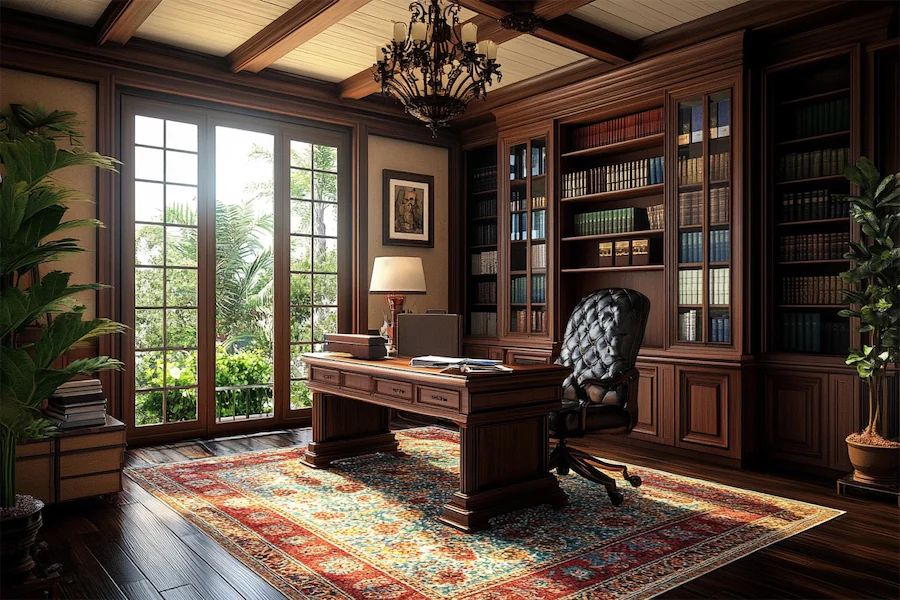Colonial office rooms exude a timeless elegance, blending historical charm with functional design. This article explores their origins, key features, applications, considerations for selection, and their relevance in contemporary interiors.
Introduction to Colonial Office Rooms
Colonial office rooms draw inspiration from the architectural and interior design styles prevalent during the colonial periods of various countries, notably British and American colonies. These spaces are characterized by their symmetrical layouts, use of rich hardwoods, and incorporation of traditional furnishings, creating a dignified and professional atmosphere.
History and Origins of Colonial Office Rooms
The colonial design aesthetic emerged during the 17th and 18th centuries as European settlers brought their architectural styles to new territories. Incorporating local materials and influences, this style evolved uniquely across different regions. In office settings, colonial design emphasized functionality, durability, and a reflection of the cultural heritage of the colonizing nation.
Key Features of Colonial Office Rooms
- Symmetry and Proportion: Balanced layouts with evenly spaced elements contribute to a harmonious environment.
- Rich Hardwood Furnishings: Use of mahogany, cherry, or oak in desks, chairs, and cabinetry adds warmth and sophistication.
- Traditional Millwork: Inclusion of wainscoting, crown moldings, and paneled walls enhances the room’s historical character.
- Antique or Reproduction Furniture: Selection of period-appropriate pieces, such as roll-top desks and Windsor chairs, reinforces the colonial theme.
- Muted Color Palettes: Utilization of soft, neutral tones like creams, taupes, and muted greens or blues to create a calm and inviting atmosphere.
Applications of Colonial Office Rooms
Colonial design can be applied to various office settings:
- Home Offices: Creating a refined and comfortable workspace that reflects historical elegance.
- Law Firms and Professional Services: Establishing an environment that conveys tradition, stability, and trustworthiness.
- Government Buildings: Incorporating colonial elements to symbolize heritage and authority.
Considerations When Choosing Colonial Office Rooms
When designing or selecting a colonial office room, consider the following:
- Authenticity: Incorporate genuine antiques or high-quality reproductions to maintain historical accuracy.
- Functionality: Ensure modern office needs are met without compromising the colonial aesthetic, such as integrating technology discreetly.
- Space Planning: Arrange furniture to promote efficiency while adhering to symmetrical design principles.
- Lighting: Utilize traditional-style fixtures that provide adequate illumination and complement the colonial theme.
- Maintenance: Be prepared for the upkeep of natural wood surfaces and antique furnishings to preserve their appearance.
Conclusion
Colonial office rooms offer a blend of historical charm and functional design, creating spaces that are both elegant and practical. By understanding their key features and thoughtful application, one can design an office that reflects the timeless appeal of colonial aesthetics while accommodating contemporary needs.
